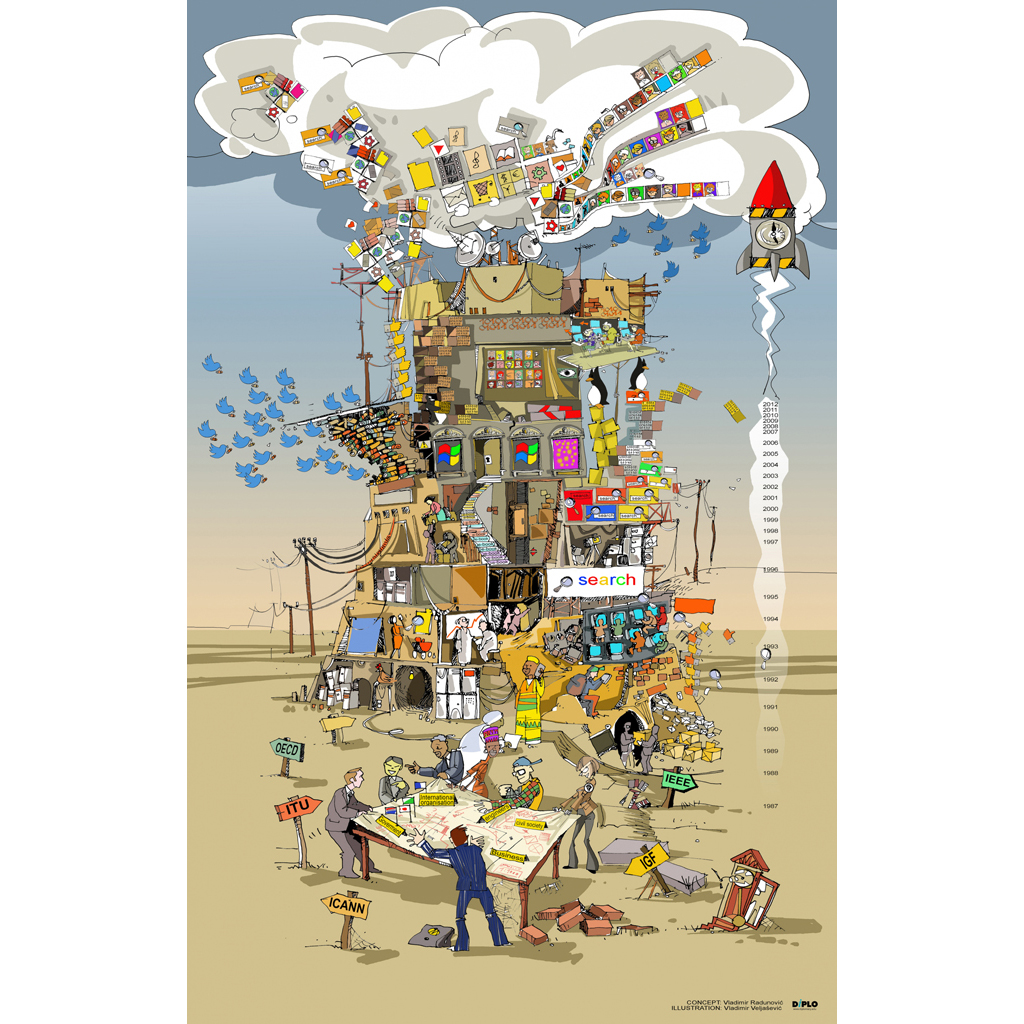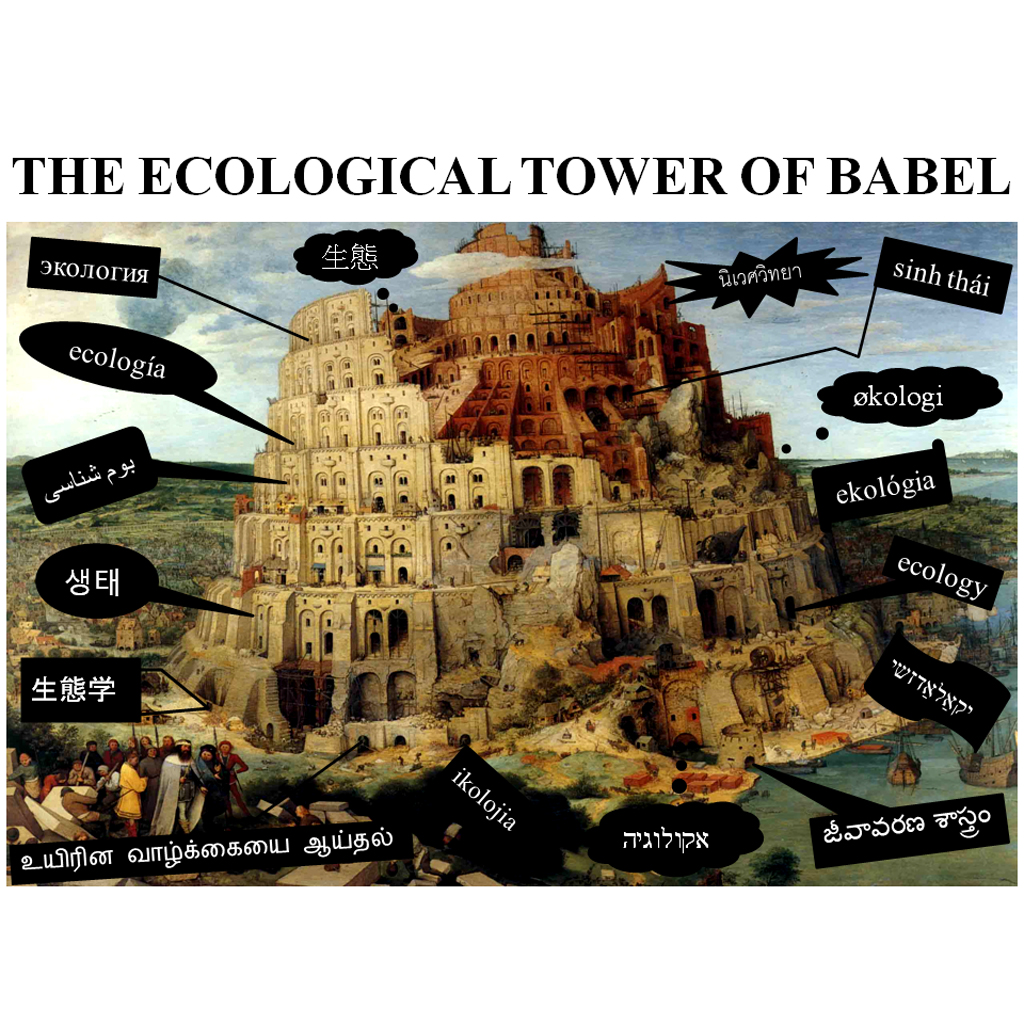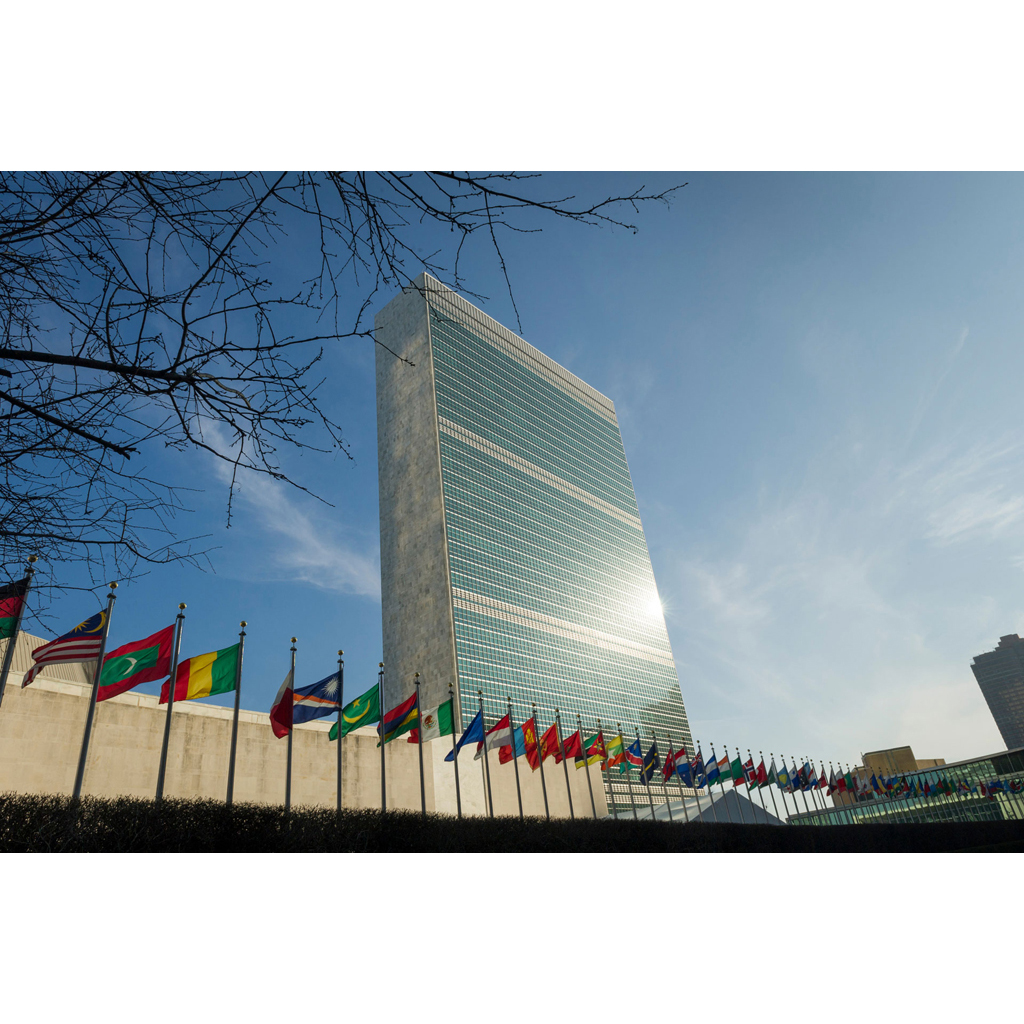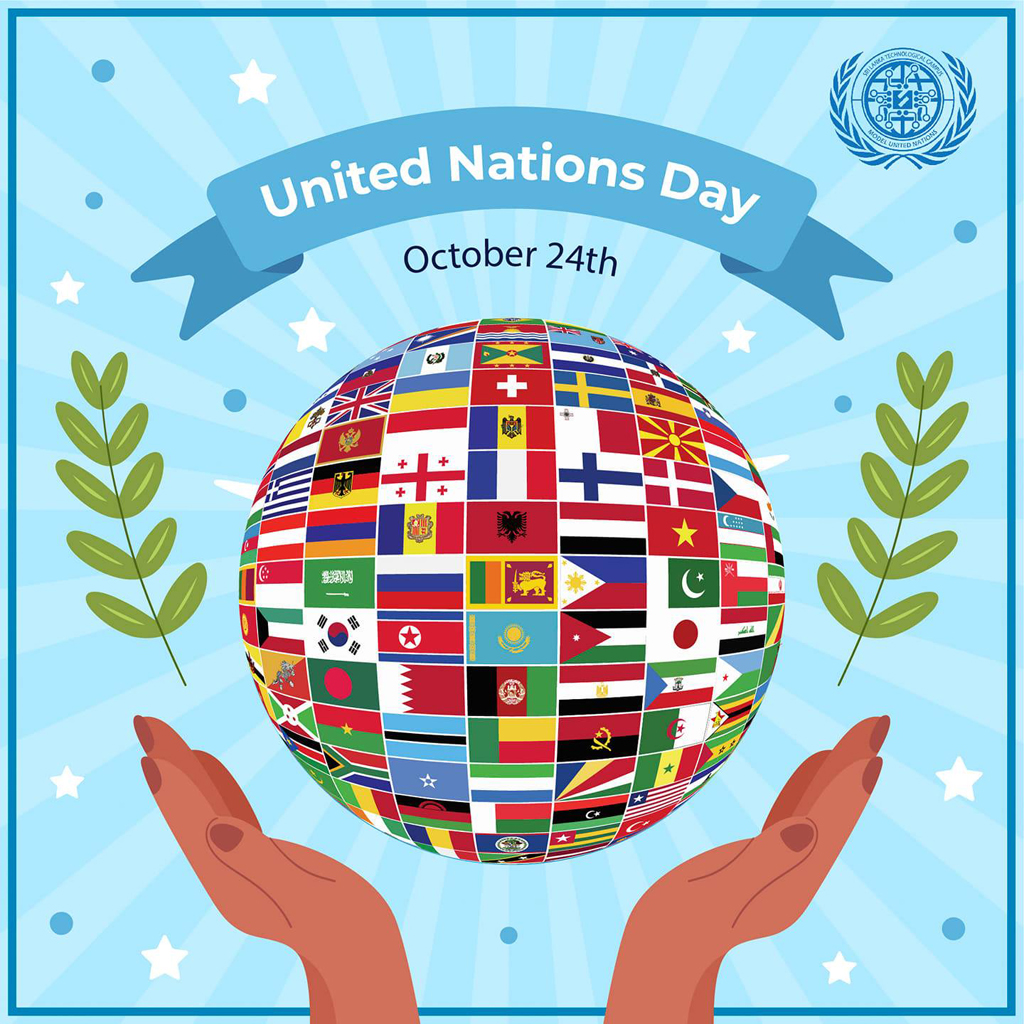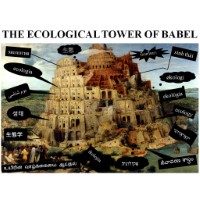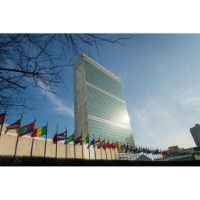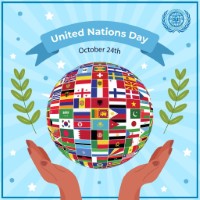- Weather Now for the 9 Nuclear Powers
- Time Now for the 9 Nuclear Powers



1) Consensus 2) Cooperation 3) Collaboration 4) Contributions




Press the "Esc" key to exit map's full screen mode
Courtesy of Jacob Wasilkowski on GitHub.com, the above flow map depicts the relationship or the origin-destination flows between 2023's winners of the Annual Bruessard Award. The origin countries are represented by the green dots on the map. The destination countries are represented by the blue dots on the map. Click the green dots to reveal the origin-destination relationship between the countries. The above flow map can be summarized as follows:
- President Xi Jinping (origin) in his [China's] relationship to Taiwan (destination)
- President Vladimir Putin (origin) in his [Russia's] relationship to Ukraine (destination)
- Supreme Leader Kim Jong-un (origin) in his [North Korea's] relationship to South Korea (destination)
- President Joe Biden (origin) in his [USA's] relationship to Ukraine, Taiwan, and South Korea (destinations)
In the flow map above, as of 2023, Russia, China, and North Korea would be viewed as the belligerent or bellicose countries. In this instance, it is Russia's belligerent posture towards Ukraine. It is China's bellicose posture towards Taiwan. It is North Korea's bellicose posture towards South Korea. The USA's presence on the flow map mainly would be viewed as a countervailing force pushing back against acts of belligerency and bellicosity by Russia (towards Ukraine), China (towards Taiwan), and North Korea (towards South Korea).
The USA's presence supposedly is meant to defend the continuance of such long-standing Western ideological principles as democracy, openness, freedom (in the political, economic, social, and religious spheres of daily life) that currently exist in varying degrees in Ukraine, South Korea, and Taiwan as of 2023. The general Western viewpoint is this: If Russia, China, or North Korea prevailed in these particular geopolitical tussles, then it would be viewed as a victory for autocracy, censorship, and repression in Ukraine, South Korea, and Taiwan, in particular, and potentially the world, in general.

Important Update: In 2024, Donald Trump was re-elected as President of the United States. With his re-election for a second term, in 2025, President Donald Trump proceeded to flirt with the notion of asserting the USA's imperialistic ambitions for the first time since the end of World War II. The previous time the USA had flexed its imperial muscles was in 1947 when the USA took possession of various Pacific island territories such as the Marshall Islands. Fast forward from 1947 to 2025: In 2025, President Donald Trump has reverted back to those old nation-building, imperialistic inclinations. President Donald Trump foolhardily has expressed an interest in re-acquiring the Panama Canal along with acquiring the countries of Greenland and Canada. President Donald Trump closed the year 2025 by invading the country of Venezuela, removing its leader from power, taking possession of Venezuela's oil reserves, and declaring himself as the leader of Venezuela. For someone who appears to be averse to nuclear war, President Donald Trump, given his imperialistic expressions, is setting the stage to plunge the world into deeper turmoil. In the imperialistic process, President Donald Trump seems poised to do lasting damage to pre-existing alliances such as the NATO (North Atlantic Treaty Organization) alliance. These alliances, thus far, have maintained global peace between the nuclear powers since the time when nuclear weapons were first created.
As of 2025, the world appears fraught with the potential for nuclear confrontation now that Russia, China, and North Korea have formed a new alliance. This development brings into clearer and more poignant focus why it is vitally important for humans to stop the Doomsday Clock from ticking forward towards doom or human extinction. With President Donald Trump's seemingly burning desire to acquire Greenland by any means necessary, whether through diplomacy or by force against the wishes of the USA's NATO partners and against the wishes of the residents of Greenland, in effect, President Donald Trump tacitly is giving approval to Russia to acquire Ukraine, approval to China to acquire Taiwan, approval for Rwanda to acquire the Democratic Republic of Congo, and so forth. For, if the USA can acquire new sovereign territory even if it is acquired by force, then surely other countries will rationalize that they can do the same thing if they have the ability to do so, thereby, leading to incivility, killing, and chaos throughout the world. Since the end of World War II, the USA traditionally has served as a role model and as a force for "good" in the world for other nations to emulate. President Donald Trump's message to the world seems to be this: The sovereignty of nations, the rule of law, charity, and benevolence be damned on a planet where might makes right. The above flowmap was updated to reflect President Donald Trump's newly found imperialistic and belligerent posture in the world (that is, his posture towards Panama, Canada, Greenland, and Venezuela). It is of utmost importance that calmer and wiser heads should prevail at this tense but potentially volatile juncture in human history. The whole of life on Earth is what's at stake.
02. Planet Earth Is Embroiled in Turmoil with All Kinds of Ongoing International and Domestic Armed Conflicts
As indicated by the flow map above, the 2023 winners of the Annual Bruessard Award, presently, are at the center of some high-profile international conflicts and potential brinkmanship instances. The 2023 winners possess the power to either make the Earth a more peaceful planet on which to live, or they can plunge the planet into some sort of World War III apocalyptic nightmare scenario. As winners of the 2023 Annual Bruessard Award, it is hoped that they see the light by choosing to preserve life on Earth.
To digress for a moment from the 2023 winners of the Annual Bruessard Award, in particular, and to mention ongoing global conflicts, in general, let there be no illusions about it. There is no shortage of upheaval, strife, violence, hatred, conflict, fighting, bloodshed, war, and killing occurring across Earth on a daily basis. It runs the gamut from internal domestic upheavals where different factions within a jurisdiction or country have taken up arms and bombs against one another to external upheavals where different nations have taken up arms and bombs against one another. The graphics below encapsulate these different kinds of upheavals. (See also, for instance, the Council on Foreign Relations (CFR)'s Global Conflict Tracker.)
Furthermore, this discussion of internal domestic upheavals and external country-on-country upheavals does not take into account some of the more locally contained kinds of armed violence. These localized conflicts include firearm violence by organized crime members, local street gangs, hate groups, traffickers of humans and contraband, ideological zealots and fanatics, and so forth.
03. Brinkmanship of the Nuclear Powers That Be as of 2023
Ending the digression and getting back to the 2023 winners, the leaders of Russia, China, North Korea, and the USA are the focus here because they (a) possess nuclear weapons of mass destruction and (b) are actively engaged in a provocative cold war of words. There is a gigantic difference between (a) an outbreak of conventional fighting and (b) an outbreak of nuclear fighting. The digression section above highlighted some instances of conventional warfare.
The difference between conventional fighting and nuclear warfare is this: On the one hand, conventional warfare can be very devastating and disruptive to the lives of citizens albeit conventional warfare is undesirable when compared to diplomatic, legislative, and jurisprudence types of approaches to resolve conflicts. On the other hand, nuclear warfare can result in human extinction. For instance, with an outbreak of global nuclear warfare due to the existence of military alliances and treaty obligations, life on Earth—particularly human life—can come to a screeching halt in a literal puff of smoke in a matter of minutes just like that.
How did the world find itself ensnared in this nuclear conundrum or dilemma in the first place? The long answer is parity and reciprocity. The general sentiment among nations is this: Other (often rival) nations possess nuclear bombs; therefore, their nations also must possess nuclear bombs as a deterrent strategy, particularly, to deter an adversarial nation. So, in the name of parity and reciprocity, the nuclear arms race continues unabated.
How can stability, peace, tranquility, and prosperity for all ever be achieved and maintained on Earth when there are so many contradictions, opposing currents, streams, threads, and viewpoints concurrently running throughout the human family? How can these conflicting interests, cross currents, and opposing viewpoints be reconciled? How can humans get on the same page to the extent that peace, tranquility, and prosperity can reign across Earth? These opposing streams or threads include additional realities such as the following ones:
- caste/class vs. equality of opportunity/non-discrimination
- meritocracy vs. diversity
- democracy vs. autocracy
- black vs. white vs. yellow vs. brown
- male vs. female
- racial prejudice vs. color-blindness
- patriarchal vs. matriarchal
- liberal vs. conservative
Other societal or national differences include things such as language, currency, attire, food, and custom differences.
Present-day international rivalries often are couched in terms such as capitalism vs. communism; democracy vs. autocracy; Islam vs. Christianity vs. Hinduism; East vs. West; North vs. South, tribalism vs. nationalism, and so forth. What is the best path forward for life on Earth on which mostly all humans can agree to live in peace and harmony?
Obviously, different approaches to daily life have advantages and disadvantages. Using Pareto optimality as the standard (that is, the greatest amount of societal good or prosperity for the greatest number of societal members), scholars such as Gwendolen Margaret Carter et al. (Major Foreign Powers), Peter Otto Steiner et al. (Economics), and Maurice H. Yeates et al. (North American City) have explored the question of the most optimal path forward for humanity. While acknowledging that no one particular approach is perfect and that each approach has merits and demerits, these scholars seem to favor societal principles such as openness, transparency, fairness, free elections, and the (social, political, and economic) freedom to pursue one's dreams and opportunities to maximize one's talents and potentials to the fullest extent.
Admittedly, these particular scholars who have reached these conclusions also were bred in and reside in the West. It is tempting for non-Westerners to conclude that perhaps these scholars harbor a latent pro-Western bias in their thinking and worldviews. The reader does not need to rely on the conclusions of these aforementioned scholars. In terms of choosing one approach over another one, the truth of the matter is that the peoples of the Earth already have voted with their feet as illustrated in the next two videos. The peoples of the Earth seem to have chosen the Western approach to daily life.
As indicated in the above two videos, peoples all across Earth are clamoring to migrate—or flee—to locations like the USA and Western Europe as places to permanently live. If the truth must be stated, then there simply is no comparable clamoring by foreigners to migrate to—or flee to— say, Russia, China, or North Korea as permanent places of residency.
If, say, the people of Puerto Rico should hold a referendum and vote to not become a part of the USA, then all efforts should cease in the USA to make Puerto Rico its 51st state. If, say, the people of Greenland should hold a referendum and vote to not become a part of the USA, then all efforts should cease in the USA to make Greenland a USA territory. By the same token, if, say, the people of Taiwan should hold a referendum and vote to not become a part of China, then all efforts in China should cease at making Taiwan become a part of or integrated into greater China. Leaders must muster the courage, fortitude, and the moral compass to let it go if the vote does not go in their favor.
There is no denying it. There are challenges in free and open societies. Problems generally arise when some members of society mistakenly conflate living freely with the freedom to engage in lawless conduct. With freedom comes a civic responsibility and duty for members of society to comport their day-to-day social behavior to the just rule of law. With freedom comes a civic responsibility and duty for members of society to behave civilly with utmost decorum.
In free and open societies, the members of society must exercise restraint, tolerance, and self-discipline when living in civil society. Citizens should not have a gun always pointed at their heads by security and law enforcement officers—or to have the prospect of going to jail or prison—as disincentives to compel them to moderate their day-to-day behavior in compliance with established and just societal standards.
In free and open societies, for instance, if the law says no littering, then do not litter. If the law says no graffiti, then do not spray-paint graffiti on the property of others. If the law says no stealing, then do not steal from others. If the law says no killing, then do not engage in acts of gunplay and ultimately murder. For murder is wrong.
Adherence to the rule of law seems simple enough. Yet, adherence to the rule of law seems so hard to realize in free and open societies. For instance, activities such as counterfeiting, unauthorized peer-to-peer file sharing, drug smuggling, and human trafficking seem to continue unabated despite these kinds of activities having been deemed illegal and unlawful activities by the governments of these free and open societies.
Obviously, it is difficult to combat these kinds of illicit and unlawful—and oftentimes risky—activities if there is a lot of money to be made (hence, the existence of the profit motive). Humans have got to find a way to overcome a criminal mindset. At the same time, once a legally agreed upon adulthood age is reached (say, 18 years old or 21 years old), so long as the activity is lawful (such as the freedom to smoke tobacco, drink alcohol, and engage in sexual intercourse by consenting adults), then the government should not interfere with or penalize those who choose to engage in such activities no matter how distasteful the government might find such activities to be. Education for all is a crucial component in steering members of society clear of choosing to take the lawless path in life.
In free and open societies, a chief concern is with citizens being tempted to engage in decadence. In closed societies, a chief concern is with citizens being tempted to engage in corruption. In theocratic or religious-based societies, a chief concern is with citizens being tempted to engage in religious fanaticism to the point of murder and war.
04. Taking Stock of Countries Possessing Nuclear Bombs and Their Inventories of Nuclear Bombs as of 2023
Courtesy of the TomTom Developer Portal, in the map below, the nine nuclear countries are spotlighted. The map highlights each nuclear country's percentage of the world's (estimated) total stockpile of 12,512 nuclear bombs as of 2023.
Given the reality that there is little let up in the present-day ideological struggle between, say, East versus West, until such time that members of the human species surmount the things that divide them, nuclear disarmament and peaceful co-existence between nations has got to be the model to follow. Life on Earth is not only about the survival and thriving of the human species but also it is about the survival of all living things including the grasses, plants, flowers, and trees. All living things deserve to live and experience the miracle of life.
| Count | Country | Nuclear Bombs | Percent |
|---|---|---|---|
| 1 | Russia | 5,889 | 47.1% |
| 2 | USA | 5,244 | 41.9% |
| 3 | China | 410 | 3.3% |
| 4 | France | 290 | 2.3% |
| 5 | UK | 225 | 1.8% |
| 6 | Pakistan | 170 | 1.4% |
| 7 | India | 164 | 1.3% |
| 8 | Israel | 90 | 0.7% |
| 9 | North Korea | 30 | 0.2% |
| Total | 12,512 | 100.0% | |
| Data Source: SIPRI Yearbook 2023 | |||
05. Question: How About A Changing of the Guardians from Male to Female Rulers of the World?
Has the time come for a changing of the guards? Has the time come for a changing of global priorities? Has the time come to have females run the world? Will female leaders get a taste of power and commence to thumping their chests, too? Would the world truly be better off if it were run by women? Has there not been enough mayhem and killing at the hands of war-mongering men over the millenia?
With women in control, perhaps the chance for World War III would be considerably lessened and the chance for world peace would be considerably heightened. One thing is worrisome, and it is this: At the current rate that things are going, the warrior males, with all of their chest thumping, muscle flexing, and saber rattling, eventually, they will fool around and kill everyone on Earth with their nuclear weapons.
Are males more disposed or inclined to have a war-mongering instinct or disposition? Perhaps war-mongering was not too bad of a thing during a day and age when sticks and stones were the weapons of war. A chest-thumping, muscle-flexing, saber-rattling, or war-mongering disposition is a very dangerous thing when nuclear, biological, chemical, and radiological weapons are thrown into the global mix. Think about it: Has it occurred to the reader that even on a micro level, how males are the shooters in 99 out of 100 incidents of mass shootings? Males, not females, usually are the ones [with a firearm] strapped, locked, loaded, and prepared to start blazing. I, for one, simply do not get it. Why do humans sit around and contemplate killing one another and blowing up the world—perhaps leading to human extinction and the annihilation of all life on Earth in the process? This notion of mutually assured destruction is sheer lunacy.
06. A Reason for Change: The Preservation of the Miracle of Life on Planet Earth with the Survival of Humankind at Stake
Why, then, do the nuclear powers not give up their nuclear bombs? Why is there no universal, global nuclear bombs disarmament by the nuclear-bomb possessing countries? A long answer was mentioned above. The short answer is that nuclear bombs afford them the privilege of being bullies. In effect, under the implicit threat of dropping a nuclear bomb, the nuclear nations get the added privilege of having things to go their way on the world stage—the might-makes-right syndrome in full effect, if you will, as opposed to the "live and let live" syndrome at work. The time has come for world leaders to move beyond the Julius Cesar, Kublai Khan kinds of mindset of geopolitical conquest, subjugation, and domination.
- Magnificent Planet Earth, 1 of 2
- Magnificent Planet Earth, 2 of 2
Looking Back at Planet Earth: The Pale Blue Dot
Heaven on Earth means the human uplift and a human mindset shift. Heaven on Earth means humankind making a deliberate choice to foster peace and prosperity on Earth as a matter of course in daily living. Heaven on Earth means a state of sustainable living. Heaven on Earth means humans rising above the mire and elevating the human condition to ever-higher standards of living.
| Count of Heavenly Bodies | Name of Heavenly Body | Heavenly Body's Average Distance from Sun (As Kilometers Rounded) | Heavenly Body's Equivalent Average Miles from Sun (Kilometers Average Distance × 0.621371192) | Heavenly Body's Equivalent Astronomical Units (au) from Sun (Kilometers Average Distance ÷ 149597870.7) | Amount of Time It Takes for Light to Reach the Heavenly Body from the Sun (As Minutes) - [(Kilometers Average Distance ÷ 299792.458) ÷ 60] |
|---|---|---|---|---|---|
| 1 | Mercury | 57,900,000 | 35,977,392 | 0.39 | 3 |
| 2 | Venus | 108,200,000 | 67,232,363 | 0.72 | 6 |
| 3 | Earth | 149,600,000 | 92,957,130 | 1.00 | 8 |
| 4 | Mars | 227,900,000 | 141,610,495 | 1.52 | 13 |
| 5 | Asteroid Belt (Zone 2 of) | 422,000,000 | 262,218,643 | 2.82 | 23 |
| 6 | Jupiter | 778,600,000 | 483,799,610 | 5.20 | 43 |
| 7 | Saturn | 1,433,500,000 | 890,735,604 | 9.58 | 80 |
| 8 | Uranus | 2,872,500,000 | 1,784,888,749 | 19.20 | 160 |
| 9 | Neptune | 4,495,100,000 | 2,793,125,645 | 30.05 | 250 |
| 10 | Pluto dwarf planet | 5,906,400,000 | 3,670,066,808 | 39.48 | 328 |
| 11 | Comet Halley | 2,667,950,012 | 1,657,787,279 | 17.83 | 148 |
| 12 | Haumea dwarf planet | 6,452,000,000 | 4,009,086,931 | 43.13 | 359 |
| 13 | Makemake dwarf planet | 6,847,000,000 | 4,254,528,552 | 45.77 | 381 |
| 14 | Eris dwarf planet | 10,125,000,000 | 6,291,383,319 | 67.68 | 563 |
| 15 | Kuiper Belt (Outer Edge Of) | 14,900,000,000 | 9,258,430,761 | 99.60 | 828 |
| 16 | Alpha Centauri (Proxima star) | 40,208,000,000,000 | 24,984,092,887,936 | 268,770.05 | 2,235,324 |
| 17 | Andromeda Galaxy | 24,000,000,000,000,000 | 14,912,908,608,000,000 | 160,430,090.93 | 1,334,256,381 |
|
For details, see: NASA Solar System Exploration See Also: https://www.joshworth.com Note: 1 astronomical unit (au) is defined as equal to a distance of 149,597,870.700 kilometers or 92,955,807.273 miles, essentially, the same average distance as it is from the Sun to Earth. Light travels at a speed of 1,079,252,849 kilometers per hour or 670,616,629 miles per hour. One light year (ly) is defined as the distance that a beam of light can travel along a straight line in one year and is equivalent to 9.461 trillion kilometers or 5.879 trillion miles (63,241.077 astronomical units), that is, 1,079,252,849 kilometers per hour or 670,616,629 miles per hour × 8,766 hours (24 hours × 365.25 days) in a year. Per NASA, "The closest star system to the Earth is the famous Alpha Centauri group. Located in the constellation of Centaurus (The Centaur), at a distance of 4.3 light-years, this system is made up of the binary formed by the stars Alpha Centauri A and Alpha Centauri B, plus the faint red dwarf Alpha Centauri C, also known as Proxima Centauri [approximately 4.25 light years away]." A Quick Video Journey from the Sun to the Alpha Centauri Group: |
|||||
When speaking of Solar System distances, travel times, and travel speeds, three simple formulas can be used to make projections. They are the two-dimensional formulas of time (t), distance (d) , and (rate of) speed (r) as outlined below:
- t = d ÷ r, or Time (Hours) = Distance (Total Miles or Kilometers) ÷ Rate of Speed (Miles or Kilometers Per Hour)
- r = d ÷ t, or Rate of Speed = Distance ÷ Time
- d = r × t, or Distance = Rate of Speed × Time
The time (t) formula was used to determine the Solar System travel times in the table below. To illustrate, take Pluto, for example. By dividing Pluto's average distance from Earth (that is, 5,756,802,129 kilometers) by the spacecraft's 36,210 kilometers per hour travel rate of speed, it follows that it would take 158,984 spacecraft hours to reach Pluto. When the 158,984 hours are divided by 24 hours in a day, it would take the spacecraft 6,624 days to reach Pluto. When the 6,624 days are divided by 365 days in a year, it would take the spacecraft a time period of 18 years to reach Pluto.
| Count of Heavenly Bodies | Name of Heavenly Body | Heavenly Body's Average Distance from Sun (As Kilometers Rounded) | Heavenly Body s Average Distance from Earth (Kilometers) Obtained by Subtracting 1 au from Heavenly Body's Average Distance from Sun | Heavenly Body's Equivalent Average Miles from Earth (Kilometers Average Distance × 0.621371192) | Amount of Time for Spacecraft to Reach the Heavenly Body from Earth Using Artemis Orion Spacecraft's Speed of 36,210 Kilometer Per Hour (or 22,500 Miles Per Hour) |
|---|---|---|---|---|---|
| 1 | Sun | 0 | 149,597,871 | 92,955,807 | 11 days |
| 2 | Mercury | 57,900,000 | 91,697,871 | 56,978,415 | 106 days |
| 3 | Venus | 108,200,000 | 41,397,871 | 25,723,444 | 48 days |
| 4 | Moon | 149,597,871 | 384,400 | 238,855 | 11 hours |
| 5 | Mars | 227,900,000 | 78,302,129 | 48,654,687 | 90 days |
| 6 | Asteroid Belt (Zone 2 of) | 422,000,000 | 272,402,129 | 169,262,836 | 313 days |
| 7 | Jupiter | 778,600,000 | 629,002,129 | 390,843,803 | 2 years |
| 8 | Saturn | 1,433,500,000 | 1,283,902,129 | 797,779,796 | 4 years |
| 9 | Uranus | 2,872,500,000 | 2,722,902,129 | 1,691,932,942 | 9 years |
| 10 | Neptune | 4,495,100,000 | 4,345,502,129 | 2,700,169,838 | 14 years |
| 11 | Pluto dwarf planet | 5,906,400,000 | 5,756,802,129 | 3,577,111,001 | 18 years |
| 12 | Comet Halley | 2,668,000,000 | 2,518,402,129 | 1,564,862,533 | 8 years |
| 13 | Haumea dwarf planet | 6,452,000,000 | 6,302,402,129 | 3,916,131,124 | 20 years |
| 14 | Makemake dwarf planet | 6,847,000,000 | 6,697,402,129 | 4,161,572,744 | 21 years |
| 15 | Eris dwarf planet | 10,125,000,000 | 9,975,402,129 | 6,198,427,512 | 31 years |
| 16 | Kuiper Belt (Outer Edge Of) | 14,900,000,000 | 14,750,402,129 | 9,165,474,954 | 47 years |
| 17 | Alpha Centauri (Proxima star) | 40,208,000,000,000 | 40,207,850,402,129 | 24,983,999,932,129 | 126,759 years |
| 18 | Andromeda Galaxy | 24,000,000,000,000,000 | 23,999,999,850,402,100 | 14,912,908,515,044,200 | 75,662,138 years |
| NOTE: The travel time the table above makes the assumption that the Artemis Orion spacecraft would be traveling at a constant speed of 36,210 kilometers per second (or 36,210 kilometer = 22,500 miles per second) for the duration of the entire one-way trip. When the Artemis Orion spacecraft departed Earth en route to the Moon on November 16, 2022, it took a much longer period of time to reach the Moon than the projected 11 hours in the table above. The reason is because the Artemis Orion spacecraft traveled at varying speeds en route to the Moon. For instance, per space.com, "…Today, Nov. 19, is Flight Day 4 of Orion's 25-day Artemis 1 mission. The spacecraft is currently 216,391 miles from Earth, 93,048 miles from the moon and cruising through space at 995 mph…Orion will make its closest approach to the moon, flying as low as 60 miles, on Monday, Nov. 21."
See Also: |
|||||
07. Meanwhile, There Are Threats and More Threats to Human Survival on Planet Earth as of 2023
And, as if nuclear bombs were not horrific enough given their phenomenal destructive power, humans have proceeded to augment their nuclear bombs with other kinds of chemical, biological, radiological, and conventional weaponry. Not only at the dawn of the 21st century do nations find themselves trapped in a seemingly uncontrollable armaments race for weaponry supremacy but also the variety and lethality of the weaponry continue to proliferate.
I simply do not get it. Why in the world do some humans choose to spend their time sitting around concocting or devising brand new ways to kill one another? Why would anyone want to destroy the whole of life on this "pale blue dot" known as Earth?
I have reached a preliminary conclusion that humans are very intelligent, creative, and knowledgeable. However, right now at the dawn of the 21st century, humans are not quite the wise species that they have designated themselves as being vis-à-vis their homo sapiens sapiens [or very wise humans] designation. Humans can be both kind to another, but they equally can be quite cruel to one another. The question becomes this: What type of human are you? Are you a human of the Pastime Paradise (Stevie Wonder), or are you a human of a Future Paradise on Earth?
Some readers are perfectly content for Earth to forever remain a Tower of Babel, so to speak. Again, as mentioned above, the 4 C's are key to world peace and harmony:
1) Consensus 2) Cooperation 3) Collaboration 4) Contributions
Think about it.
Babel's origins and meaning:
7 Go to, let us go down, and there confound
their language, that they may not understand
one another's speech.
8 So the LORD scattered them abroad from
thence upon the face of all the earth: and they
left off to build the city.
9 Therefore is the name of it called Babel;
because the LORD did there confound the
language of all the earth: and from thence did
the LORD scatter them abroad upon the face of
all the earth.
08. Puny Humans Within the Gargantuan Universe and the Vastness of Outer Space: Finding A Way for Humans to Survive and Thrive, Or Humans Choosing to "Just Say No" to A Dimming of the Light of Life on Earth
In closing, I realize that somber, probing, difficult topics like these (such as the prospects for human annihilation or human extinction) will take some readers out of their comfort zones. When readers are accustomed to certain day-to-day ways of living and thinking and when confronted with a new way of thinking and living (such as a genuine global unity of humankind), some readers might find this notion too uncomfortable to accept. After all, there remains a multiplicity of political, economic, social, religious, language, racial, and cultural differences between the peoples of the Earth. However, the reality of seemingly impenetrable human comfort zones is not a reason for me to shrink from the task (of human survival and prosperity) at hand.
The point to be made here is this: Given the vastness of the Universe, and given inconsequential planet Earth embedded within the vastness of the Universe, humans have got a good thing going on down there on that little planet known as Earth. The good thing going is the miracle of life. Humans should not blow it. Humans should not extinguish the torch of life on Earth.
Note: Please visit the "Credits" page of this website to view the resources used to create this 2023 Winner page.






















